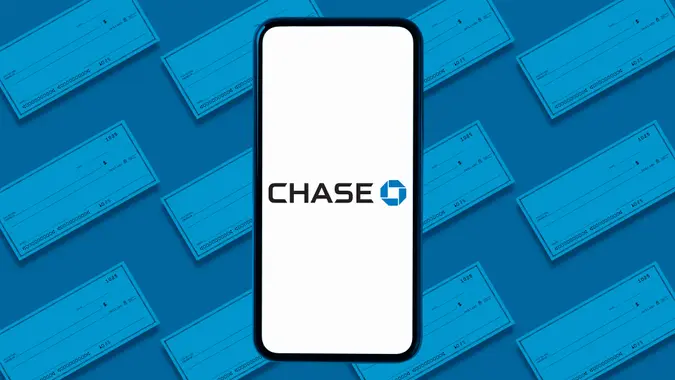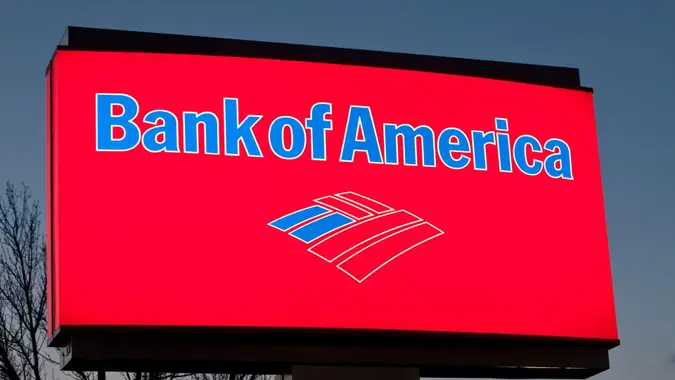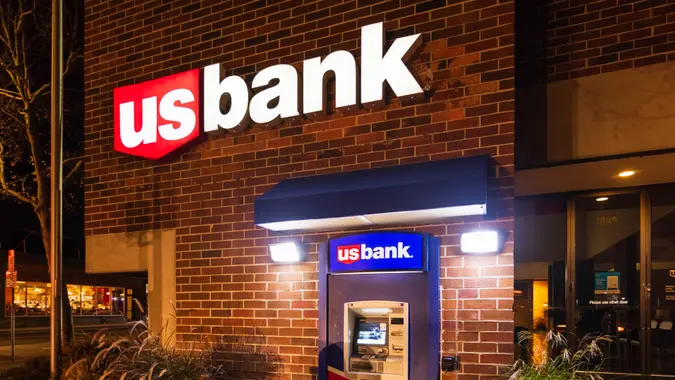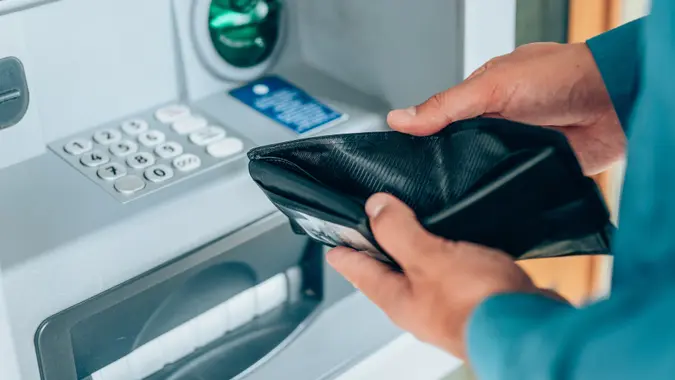What Happens If Your Capital One Checking Account Balance Goes Too Low?

Commitment to Our Readers
GOBankingRates' editorial team is committed to bringing you unbiased reviews and information. We use data-driven methodologies to evaluate financial products and services - our reviews and ratings are not influenced by advertisers. You can read more about our editorial guidelines and our products and services review methodology.

20 Years
Helping You Live Richer

Reviewed
by Experts

Trusted by
Millions of Readers
A low or negative checking account balance can happen to almost anyone. If you bank with Capital One, you have the advantage of no overdraft fees and other overdraft options, such as its free transfer and auto-decline options. Continue reading to see what happens if your Capital One checking account balance goes too low or in the negative and what you can do about it.
What Is a Negative Checking Account Balance?
When your checking account balance dips below zero, it is in overdraft. This happens when you don’t have enough money in your account to cover the payments you make. Your account goes into debt if the bank accepts the payment, leaving you with a negative balance.
Consequences of a Negative Checking Account Balance
Here are a few things that can happen if your checking account goes negative.
Checking Account Closure and Overdraft Fees
At most banks, if you don’t rectify your negative checking account balance, your account will be closed. You could also be charged overdraft fees. The average cost for bank overdraft fees in the U.S. for 2023 is $26.61 per transaction, according to Statista.
Your bank may decline a transaction due to insufficient funds. In some cases, you could be charged a non-sufficient funds fee that is the same amount as the overdraft fee.
Debt Collection and Credit Impact
If your checking account balance goes negative and stays in that state for some time, your bank may send your account to a collection agency, which may notify the three credit reporting bureaus, TransUnion, Experian and Equifax. Negative information can remain on your credit report for up to seven years and impact your credit score.
Why Should You Bank With Capital One?
If you don’t want to risk paying overdraft fees, consider opening a Capital One 360 Checking account. There are no monthly service fees and no required minimum deposit amount, and it offers a APY*.
Overdraft Options for the Capital One 360 Checking Account
The Capital One 360 Checking account has several overdraft options, including auto-decline, free transfer and no-fee overdraft options. Here’s how they work.
With auto-decline, Capital One declines transactions that will cause overdrafts to your checking account. Capital One’s free transfer option automatically transfers funds from your savings account or money market account to your checking account. Finally, Capital One’s no-fee overdraft option allows you to make approved transactions that put your account below a zero balance without incurring a fee.
How To Choose Your Capital One Overdraft Option
Follow these steps to select or change your Capital One overdraft option:
- Log in to your Capital One account online.
- Select your Capital One 360 Checking account.
- Select “More Services” and then “Overdraft Settings.”
- Choose your overdraft option from the menu.
Final Take on Capital One Checking Accounts
An overdraft occurs in your Capital One checking account when Capital One accepts payment on a transaction that takes your checking account balance to below zero. Capital One offers a range of overdraft options and no overdraft fees for the 360 Checking account.
A Capital One 360 Checking account may be a good option if you tend to overspend and make frequent ATM withdrawals or debit card purchases without paying close attention to how much is in your account.
Capital One Checking Account FAQ
Here are answers to a few of the most commonly asked questions about Capital One checking accounts.- How do I qualify for Capital One's no-fee overdraft option?
- To be eligible for the Capital One no-fee overdraft option, you must deposit a minimum of $250 into your checking account during two of the previous three calendar months. New accounts are not eligible.
- How will I know if my Capital One checking account balance is low?
- You can set and manage alerts on your Capital One checking account for low-balance notifications. Here's how to do it online:
- Sign in to your Capital One account and select the drop-down menu in the top right.
- Select "alerts." Under "account alerts," select your account.
- For each alert, use the drop-down menu to check the box for email, text or push alerts.
- Choose limits for the balance notifications you want to receive.
- You can set and manage alerts on your Capital One checking account for low-balance notifications. Here's how to do it online:
Editorial Note: This content is not provided by any entity covered in this article. Any opinions, analyses, reviews, ratings or recommendations expressed in this article are those of the author alone and have not been reviewed, approved or otherwise endorsed by any entity named in this article.
*Capital One interest rates accurate as of 4/5/24. See website for all current rates.
 Written by
Written by  Edited by
Edited by 























